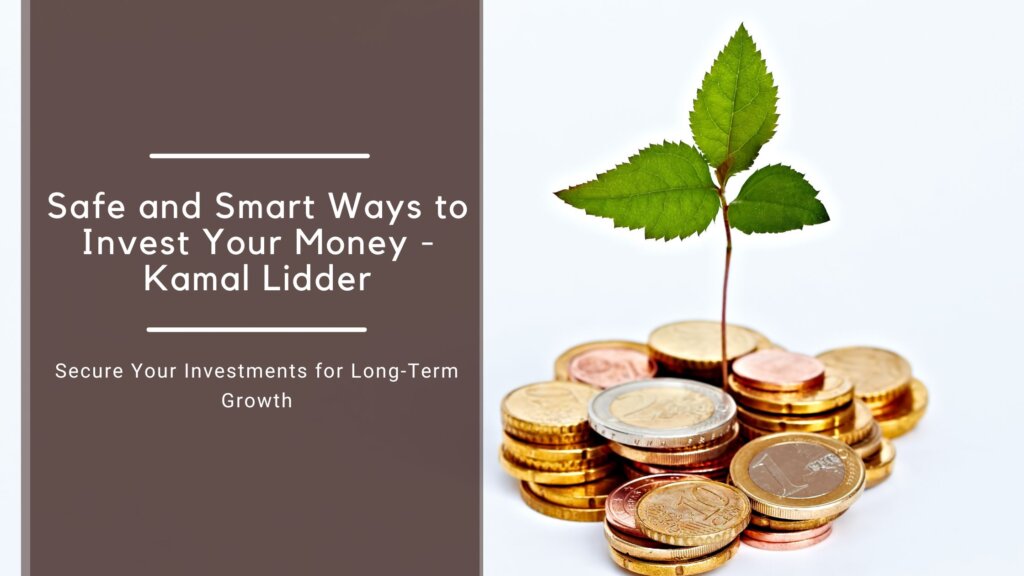Investing is a powerful way to build wealth over time, but with so many options, it can be hard to know where to begin. It’s important to take a thoughtful and careful approach to ensure long-term financial stability. Kamal Lidder offers tips on how to make wise investment choices while minimizing risks.
1. Understand Your Financial Goals
Before you begin investing, clearly define your goals. Are you saving for retirement, purchasing a home, or covering your child’s education costs? Understanding your objectives will help you select the right investment strategy. Setting a timeline for your goals can also guide your investment choices. Short-term goals may require safer options like bonds or high-yield savings accounts, while long-term goals can benefit from stock market growth.
2. Diversify Your Investments
Spreading your money across different asset classes reduces risk. A diversified portfolio may include:
- Stocks – Potential for high returns but comes with risk.
- Bonds – More stable but offer lower returns.
- Mutual Funds – Professionally managed portfolios with built-in diversification.
- Real Estate – Tangible assets that appreciate over time.
- Gold and Commodities – Hedge against inflation.
A well-balanced portfolio minimizes risk while maximizing growth opportunities.
3. Invest in Index Funds and ETFs
If you want a hands-off approach, consider index funds and exchange-traded funds (ETFs). These funds track market indices and provide steady long-term growth. They also have lower fees than actively managed funds, making them a cost-effective investment choice.
4. Prioritize Low-Cost Investments
Fees can eat into your returns over time. Look for investment options with minimal costs, such as low-cost index funds. Compare expense ratios before making a decision, as even small differences in fees can impact your wealth over decades.
5. Keep an Emergency Fund
Before investing, make sure you have an emergency fund that covers at least 3–6 months of expenses. This fund will prevent you from selling investments at a loss during unexpected situations, such as job loss or medical emergencies.
6. Consider Working with a Financial Advisor
If you’re unsure where to start, consult a professional. Kamal Lidder, a skilled financial advisor, can guide you in creating a tailored investment plan. An expert’s advice can help you avoid common mistakes and stay on track with your goals.
7. Avoid Emotional Investing
Investing requires patience. Markets fluctuate, but making impulsive decisions can lead to losses. Stick to your long-term strategy and avoid panic selling during downturns. Staying disciplined and trusting your investment plan will help you ride out market volatility.
8. Take Advantage of Tax-Advantaged Accounts
Maximize returns by using tax-advantaged accounts such as:
- RRSPs (Registered Retirement Savings Plans) – Tax-deferred growth for retirement savings.
- TFSAs (Tax-Free Savings Accounts) – Grow investments tax-free.
- 401(k) Plans – Employer-sponsored retirement plans with tax benefits.
Using these accounts wisely can help you save more efficiently and reduce your tax burden.
9. Invest Regularly with Dollar-Cost Averaging
Investing a fixed amount regularly reduces the impact of market fluctuations. This strategy, known as dollar-cost averaging, ensures you buy more shares when prices are low and fewer when prices are high. This approach helps smooth out market volatility and encourages long-term discipline.
10. Stay Informed and Keep Learning
Markets evolve, and staying informed is key to making smart investment decisions. Follow financial news, read investment books, and consider learning from experts like Kamal Lidder to enhance your knowledge. Continuous learning helps you adapt to market changes and refine your strategy over time.
Final Thoughts
Investing doesn’t have to be complicated. By setting clear goals, diversifying wisely, and making informed decisions, you can grow your wealth safely. Whether you’re a beginner or an experienced investor, these strategies will help you achieve financial security over time. The key is to stay patient, disciplined, and proactive in managing your investments.

